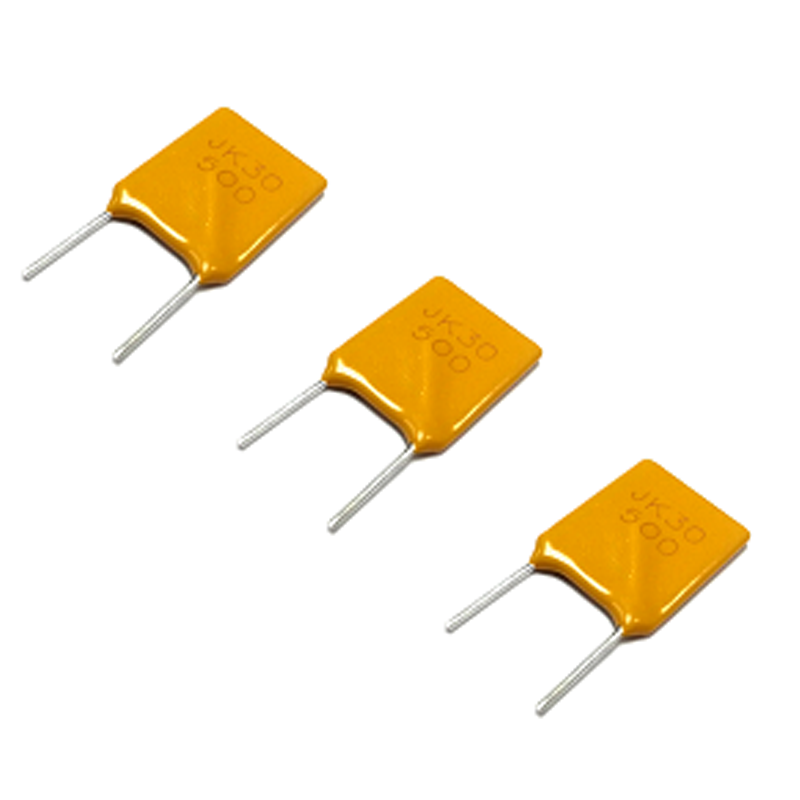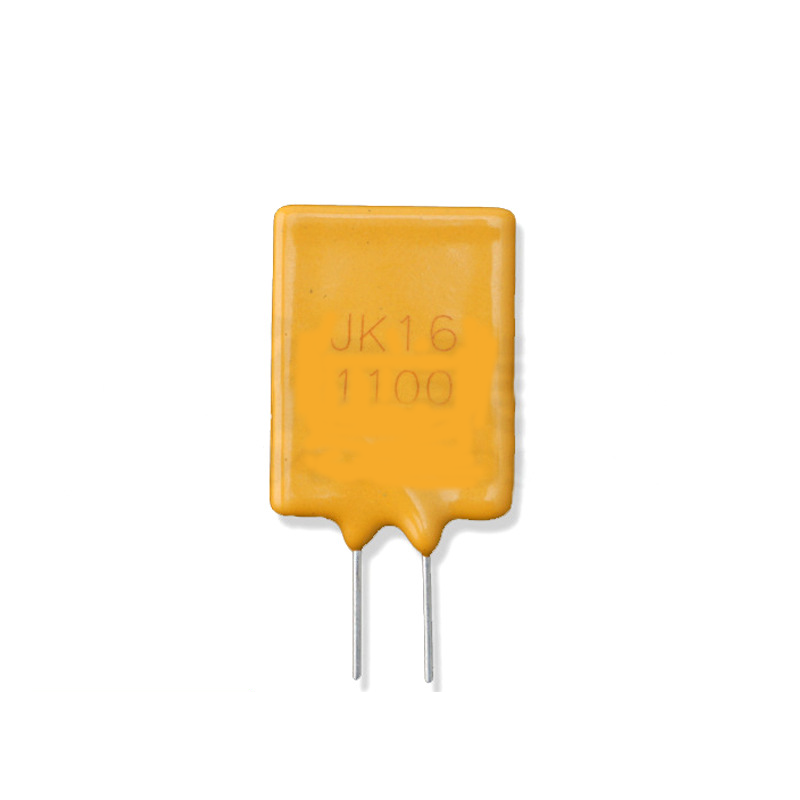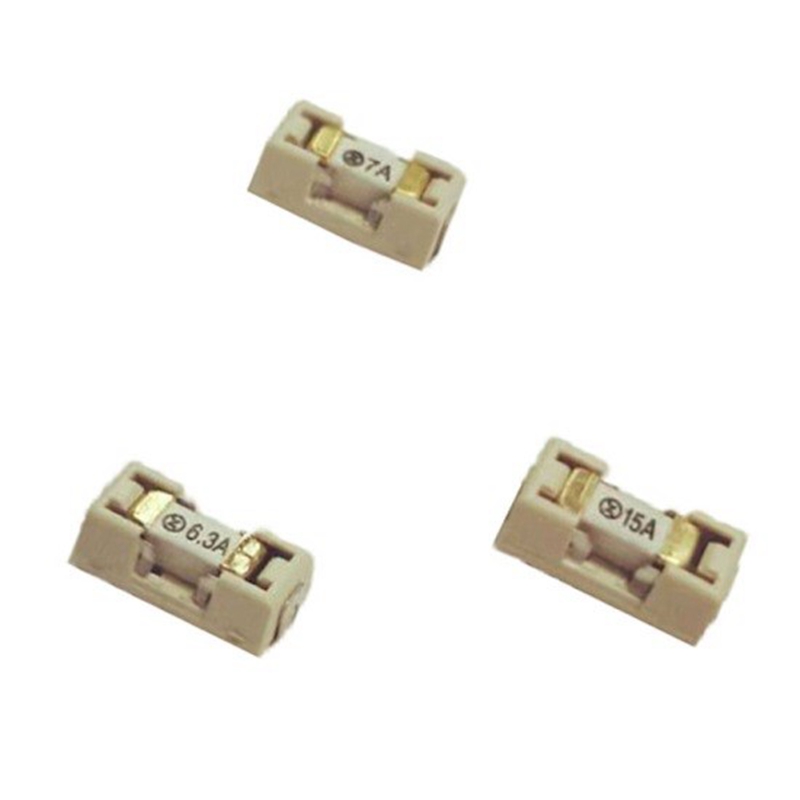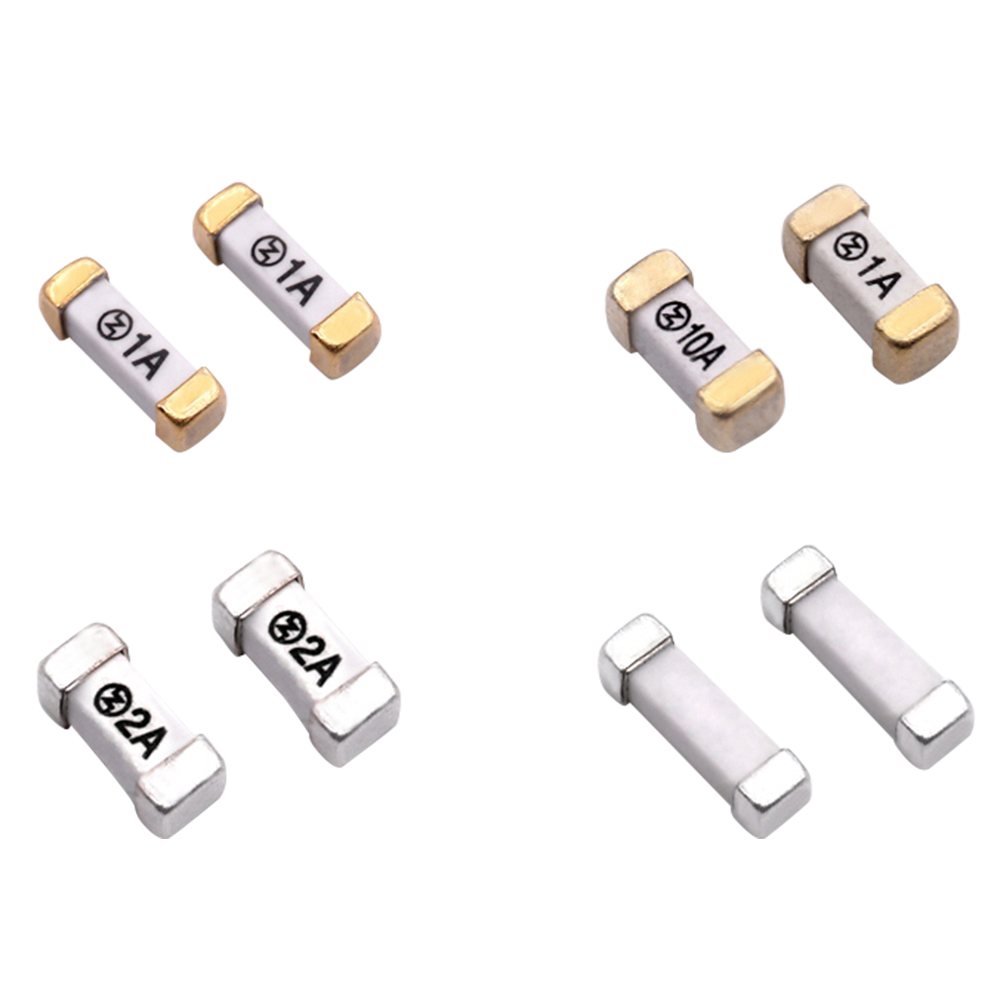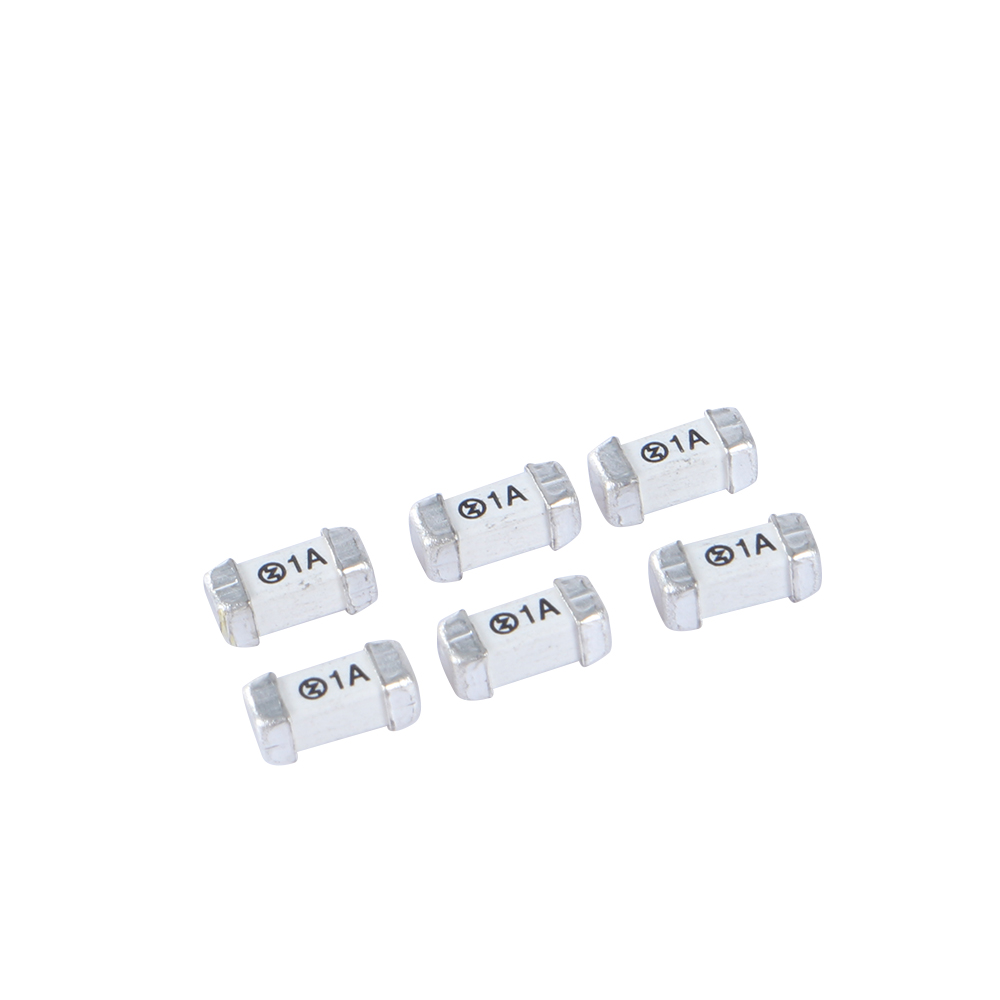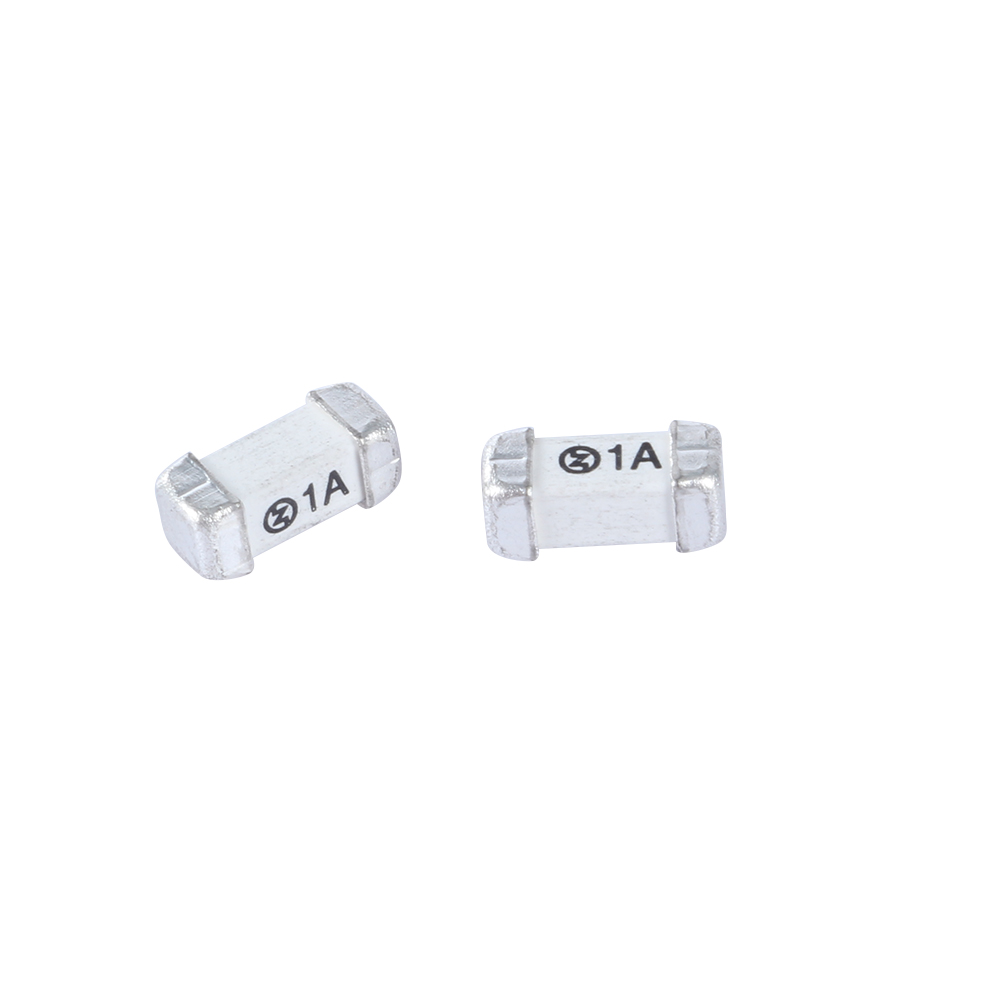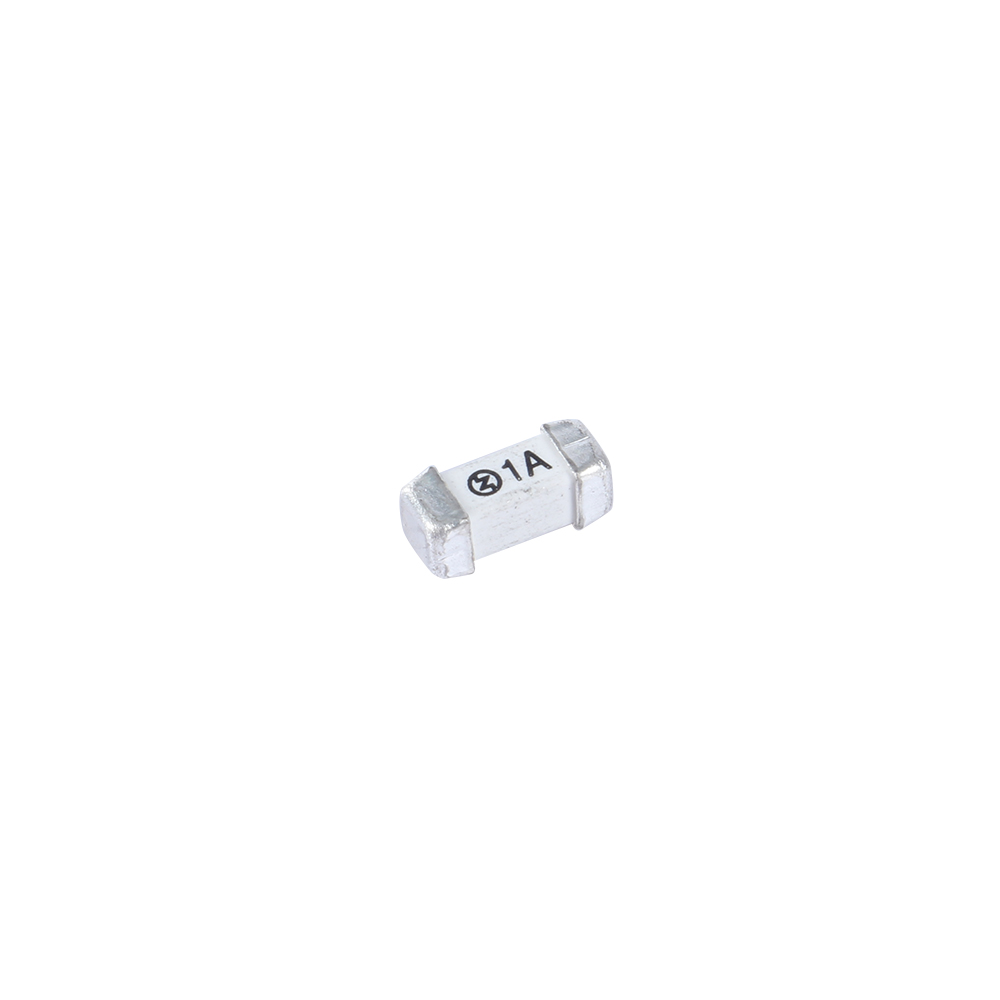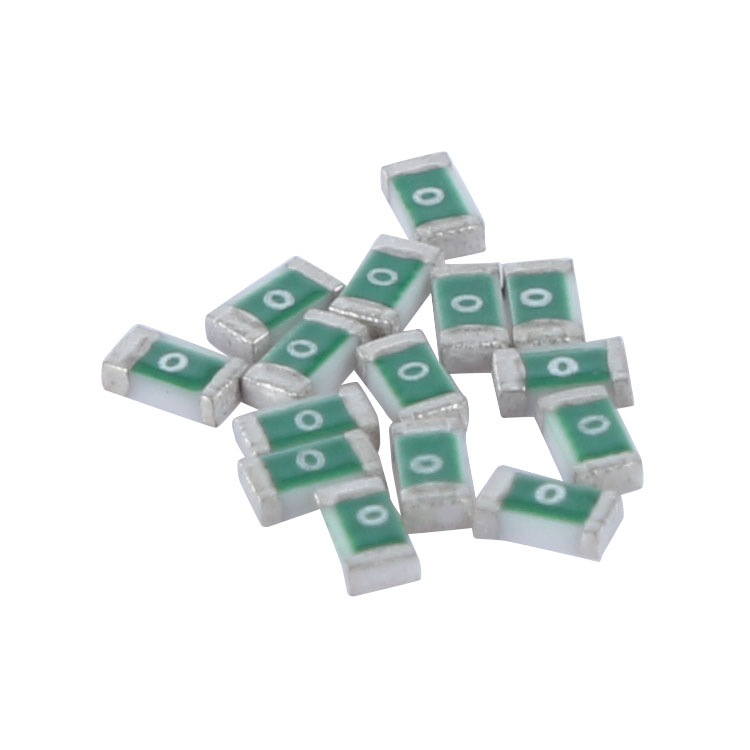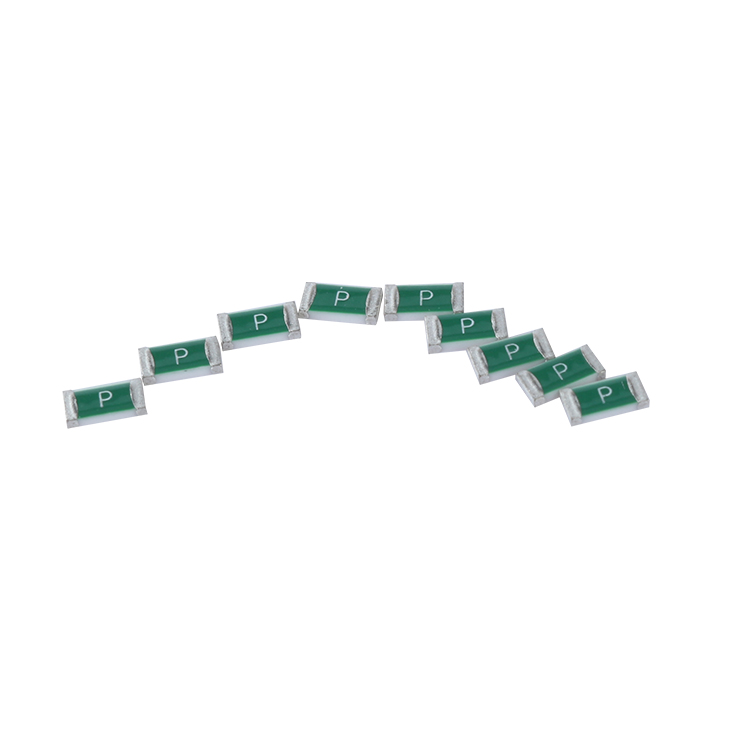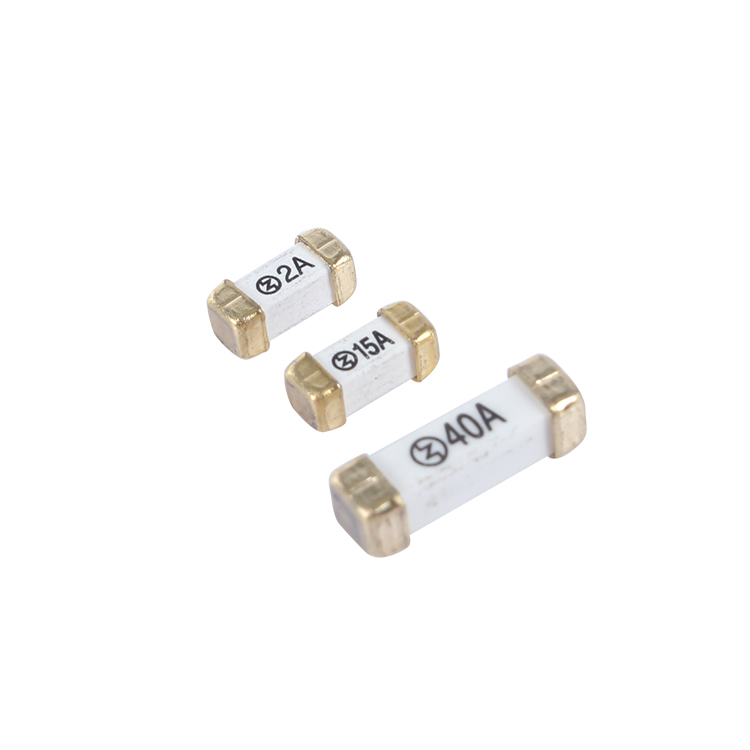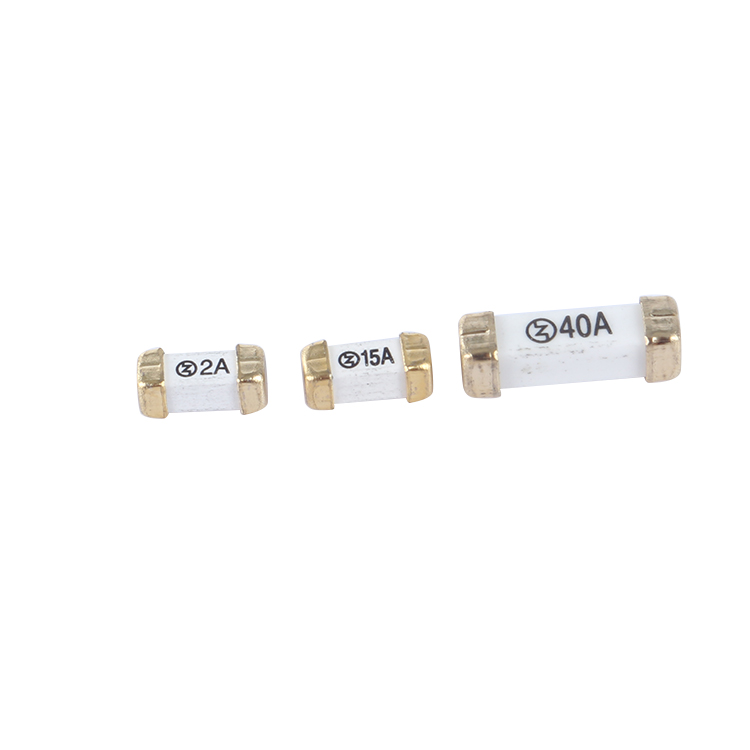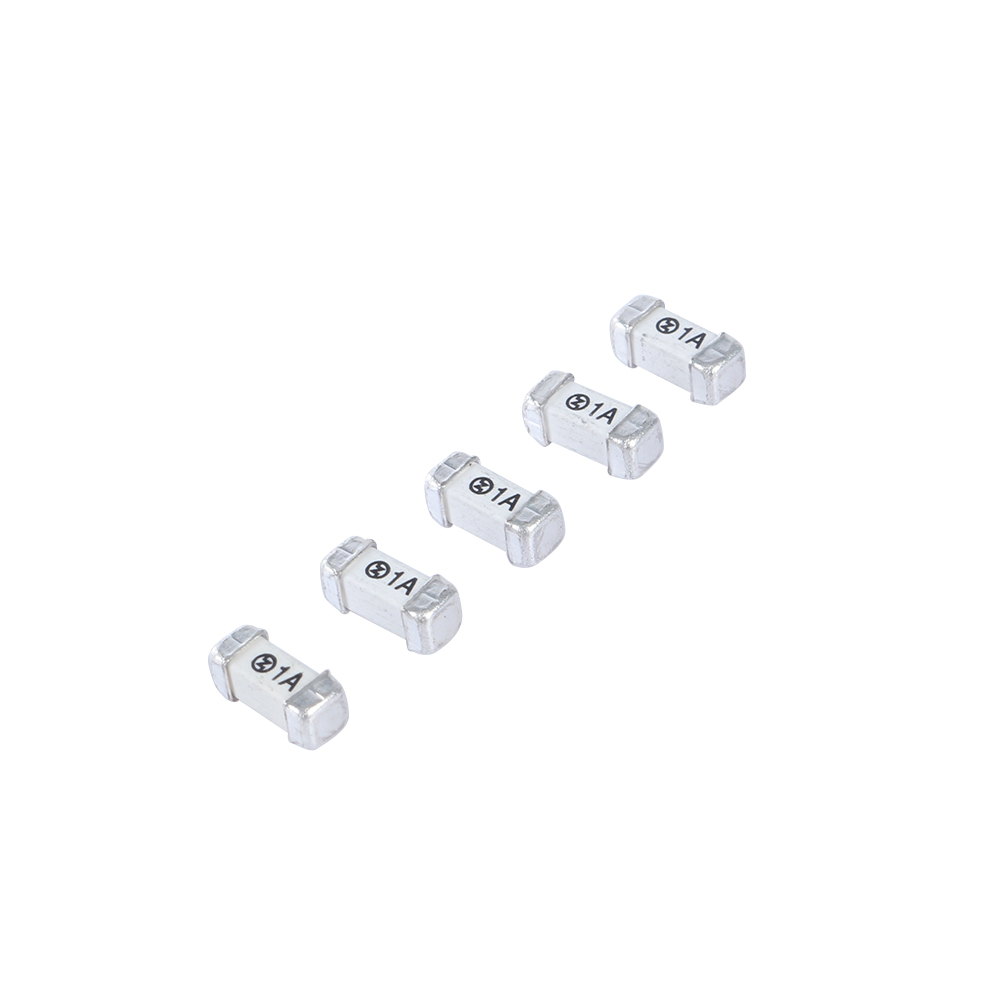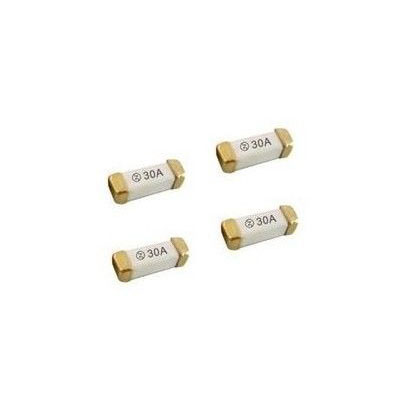2410 300V Time Lag Wire In Air High Inrush Square Shape Surface Mount Fuse 1A
Description of 300V Square Slow Blow Surface Mounted Fuse
2410 300V Time Lag square shape surface mount High Inrush fuses adopt Wire-in-Air (WIR) construction. Small footprint with wide range of available current rating makes the fuse ideal for over-current protection applications, in both AC and DC circuits using surface mount technology. SST Series is also RoHS compliant and halogen-free to meet global environmental standard.
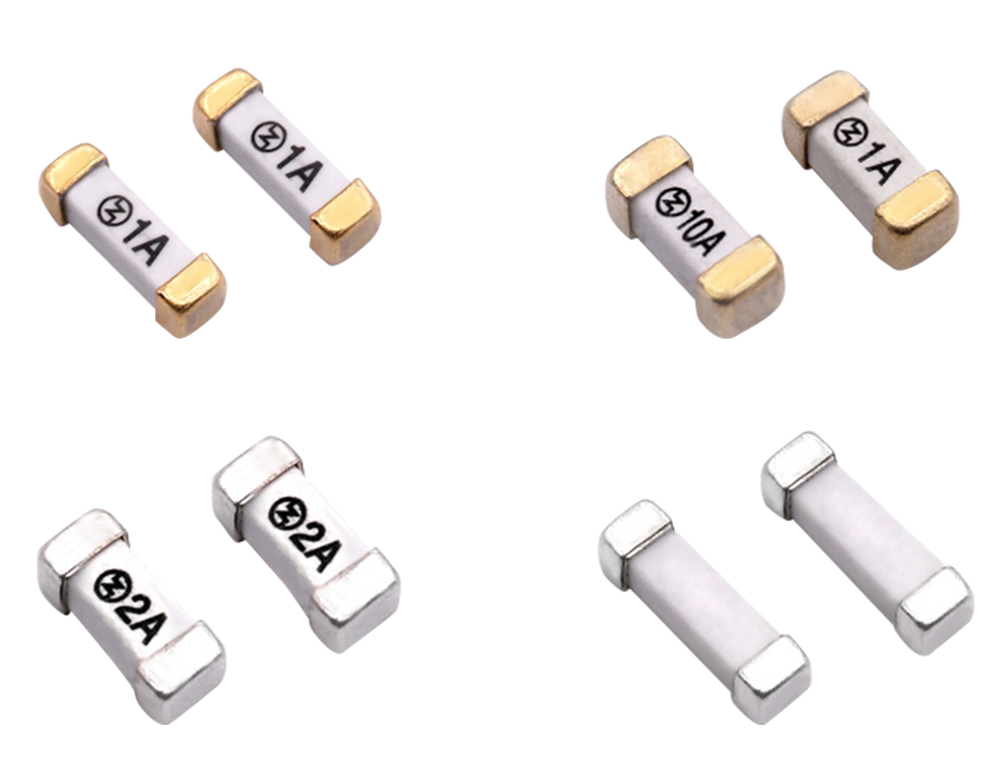
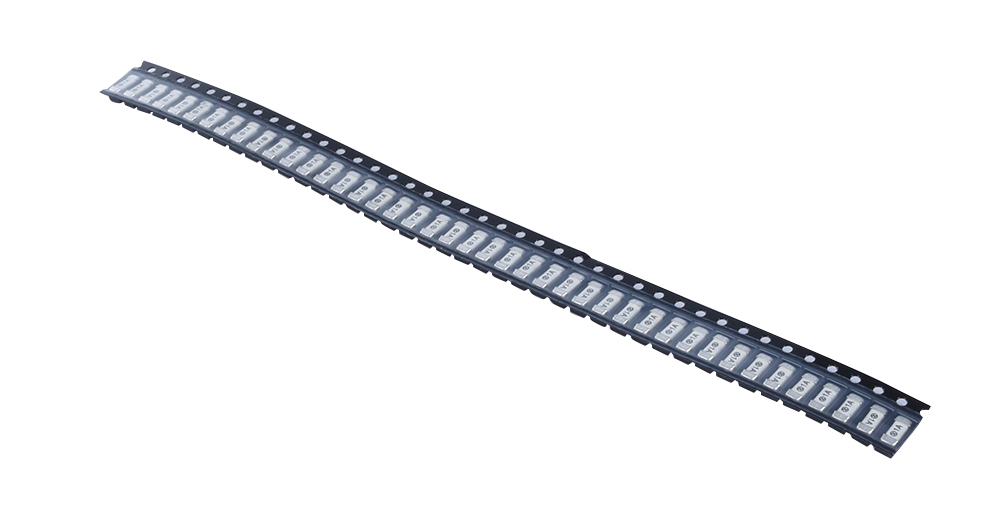
Features of 300V Square Slow Blow Surface Mounted Fuse
Slow-blow, High inrush withstand capability
Wire-In-Air performance
Tape and Reel for automatic placement
Wide operating temperature
Wide range of current rating available
Higher temperature profiles
Low temperature de-rating
Excellent environmental integrity
Application of 300V Square Slow Blow Surface Mounted Fuse
Battery pack
Power supply
Industrial equipment
Telecom system
Cooling fan system
LCD monitors and modules
PC related equipment / peripherals
Medical equipment
Wireless base station
Automotive devices
Standards and Agency Approvals of 300V Square Slow Blow Surface Mounted Fuse
1 Standards:In accordance with UL 248-14.
2 Agency Approvals
|
Agency
|
Current Range
|
Series Number
|
|
UL
|
50mA ~ 7A
|
SST
|
|
C-UL
|
50mA ~ 7A
|
SST
|
Structure And Size of 300V Square Slow Blow Surface Mounted Fuse (Unit:mm)
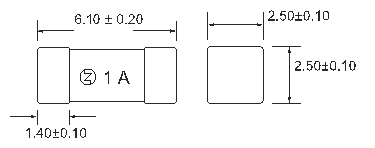
End caps-------Au or Ag Plated Brass Cap
Body ----------Non-Transparent Square Ceramic Tube
Fuse element----Cu-Ag Alloy wire
Electrical Characteristics of 300V Square Slow Blow Surface Mounted Fuse
|
Catalog
No.
|
Ampere
Rating
|
Voltage
Rating
|
Breaking
Capacity
|
Nominal Cold
Resistance
(Ohms)
|
I2TMelting
Integral(A2.S)
|
Agency Approvals
|
|

|

|
|
SST0250
|
250mA
|
300VAC
|
50A@300VAC
50A@250VAC
200A@125VAC
|
0.860
|
0.145
|
●
|
●
|
|
SST0300
|
300mA
|
0.620
|
0.162
|
●
|
●
|
|
SST0315
|
315mA
|
0.550
|
0.189
|
●
|
●
|
|
SST0375
|
375mA
|
0.470
|
0.200
|
●
|
●
|
|
SST0400
|
400mA
|
0.380
|
0.238
|
●
|
●
|
|
SST0500
|
500mA
|
0.320
|
0.275
|
●
|
●
|
|
SST0600
|
600mA
|
0.285
|
0.470
|
●
|
●
|
|
SST0630
|
630mA
|
0.256
|
0.566
|
●
|
●
|
|
SST0700
|
700mA
|
0.208
|
0.805
|
●
|
●
|
|
SST0750
|
750mA
|
0.175
|
1.240
|
●
|
●
|
|
SST0800
|
800mA
|
0.155
|
1.880
|
●
|
●
|
|
SST1100
|
1A
|
0.148
|
3.500
|
●
|
●
|
|
SST1125
|
1.25A
|
0.102
|
4.760
|
●
|
●
|
|
SST1150
|
1.5A
|
0.085
|
6.305
|
●
|
●
|
|
SST1200
|
2A
|
0.044
|
8.950
|
●
|
●
|
|
SST1250
|
2.5A
|
0.043
|
16.025
|
●
|
●
|
|
SST1300
|
3A
|
0.033
|
21.560
|
●
|
●
|
|
SST1315
|
3.15A
|
0.029
|
22.750
|
●
|
●
|
|
SST1350
|
3.5A
|
0.027
|
27.050
|
●
|
●
|
|
SST1400
|
4A
|
0.025
|
31.808
|
●
|
●
|
|
SST1500
|
5A
|
0.019
|
40.250
|
●
|
●
|
|
SST1600
|
6A
|
0.018
|
67.245
|
●
|
●
|
|
SST1630
|
6.3A
|
0.017
|
73.550
|
●
|
●
|
|
SST1700
|
7A
|
0.015
|
76.280
|
●
|
●
|
1 Test Conditions :All electrical test is to be conducted with the ambient air at a temperature of 25±5℃.
2 Interrupting Rating:Breaking Capacity: 50A@300Vac, 50A@250Vac,200A@125Vac.
3Operating Characteristics of the2410 300V Time Lag Surface Mount Fuse
|
% of Ampere Rating(In)
|
Blowing Time
|
|
100% * In
|
4 hours Min
|
|
200% * In
|
120 sec Max
|
Package of 300V Square Slow Blow Surface Mounted Fuse
1,000 pcsin 7 inches dia. reel, 12mm wide tape, EIA Standard 481
Reliability of 300V Square Slow Blow Surface Mounted Fuse
|
NO.
|
Item
|
Content
|
Reference standards
|
|
1
|
Product Marking
|
Brand, Ampere Rating
|
AO LITTEL marking standards
|
|
2
|
Operating Temperature
|
-55°C to 125°C
|
IEC60068-2-1/2
|
|
3
|
Solderability
|
T=240°C±5°C , t=3sec±0.5sec, Coverage≥95%
|
MIL-STD-202, Method 208
|
|
4
|
Resistance to Soldering Heat
|
10 sec at 260°C
|
MIL-STD-202, Method 210, Test condition B
|
|
5
|
Insulation Resistance (after Opening)
|
10,000 ohms minimum
|
MIL-STD-202, Method 302, Test Condition A
|
|
6
|
Thermal Shock
|
5 cycles, -65°C / +125°C, 15 minutesat each extreme
|
MIL-STD-202, Method 107, Test Condition B
|
|
7
|
Mechanical Shock
|
100G’s peak for 6 milliseconds, 3cycles
|
MIL-STD-202, Method 213, Test I
|
|
8
|
Vibration
|
0.03”amplitude, 10-55 Hz in 1 min. 2hrs each XYZ=6hrs
|
MIL-STD-202, Method 201
|
|
9
|
Moisture Resistance
|
10 cycles
|
MIL-STD-202, Method 106
|
|
10
|
Salt Spray
|
5% salt solution,48hrs
|
MIL-STD-202, Method 101, Test Condition B
|
Environmental Characteristic of 300V Square Slow Blow Surface Mounted Fuse
When choosing the fuse's specification, if the operating environmental temperature beyond the scopefrom 20~30℃, engineer should consider the environmental temperature's affection to fuses.Please refer: Temperature Rerating Curve:
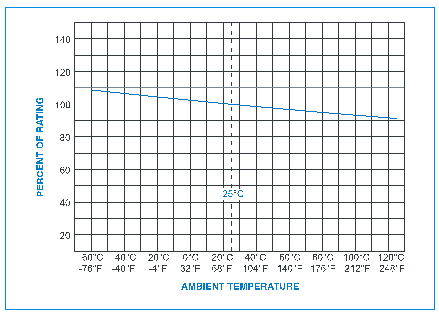
Frequently Asked Questions of 300V Square Slow Blow Surface Mounted Fuse
Q: What's the difference between the slow blow and fast acting fuse in terms of performance and application?
A: A slow blow fuse is different from a fast acting fuse in its capability to withstand transient pulse currents, i.e., it can withstand the surge current upon power-on/off, thus ensuring the equipment works normally. Therefore, slow blow fuses are often called time-delay fuses. Technically, a slow blow fuse features a higher I2t value, and it requires more energy to blow, so it is more capable of withstanding pulses compared with a fast acting fuse of same rated current.
When an overcurrent occurs in a circuit, the breaking time of a slow blow fuse takes longer than that of a fast acting fuse because of the larger I2t. Is it less protected this way as some people are worried? The answer is no. Once the circuit fails, the overcurrent will last and corresponding energy released will go beyond the I2t of the fuse until it blows out. The timing difference of slow blowing and fast acting is not significant to their protection. Slow blowing will affect the protection performance only when sensitive components existing in the protected circuit need to be protected.
Due to the previous difference, slow blow and fast acting fuses are applied to different circuits. Fast acting fuses must be used in purely resistive circuits (no or fewer surges) or the circuits where IC and other sensitive components need to be protected, while slow blow fuses are preferably used in capacitive or sensitive circuits where surges occur upon power-on/off and power input/output. Apart from circuits for IC protection, most applications with fast acting fuses can be replaced with slow blow ones to enhance anti-surge capability. Contrarily, replacement of applications with slow blow fuses to fast acting ones may cause the fuse to break as soon as the equipment is switched on and fails to work.
Furthermore, economic consideration is also an indirect factor for selection because a slow blow fuse is much expensive than a fast acting one.
Hot Tags: 300V Square Slow Blow Surface Mounted Fuse, China, Manufacturers, Suppliers, Factory, Made in China, Wholesale, Buy, Customized, in stock, Bulk, Free Sample, Cheap, Discount, Buy discount, Low price, Price, Price list, Quotation
 English
English  Español
Español  Português
Português  русский
русский  Français
Français  日本語
日本語  Deutsch
Deutsch  tiếng Việt
tiếng Việt  Italiano
Italiano  Nederlands
Nederlands  ภาษาไทย
ภาษาไทย  Polski
Polski  한국어
한국어  Svenska
Svenska  magyar
magyar  Malay
Malay  বাংলা ভাষার
বাংলা ভাষার  Dansk
Dansk  Suomi
Suomi  हिन्दी
हिन्दी  Pilipino
Pilipino  Türkçe
Türkçe  Gaeilge
Gaeilge  العربية
العربية  Indonesia
Indonesia  Norsk
Norsk  تمل
تمل  český
český  ελληνικά
ελληνικά  український
український  Javanese
Javanese  فارسی
فارسی  தமிழ்
தமிழ்  తెలుగు
తెలుగు  नेपाली
नेपाली  Burmese
Burmese  български
български  ລາວ
ລາວ  Latine
Latine  Қазақша
Қазақша  Euskal
Euskal  Azərbaycan
Azərbaycan  Slovenský jazyk
Slovenský jazyk  Македонски
Македонски  Lietuvos
Lietuvos  Eesti Keel
Eesti Keel  Română
Română  Slovenski
Slovenski  मराठी
मराठी  Srpski језик
Srpski језик 

